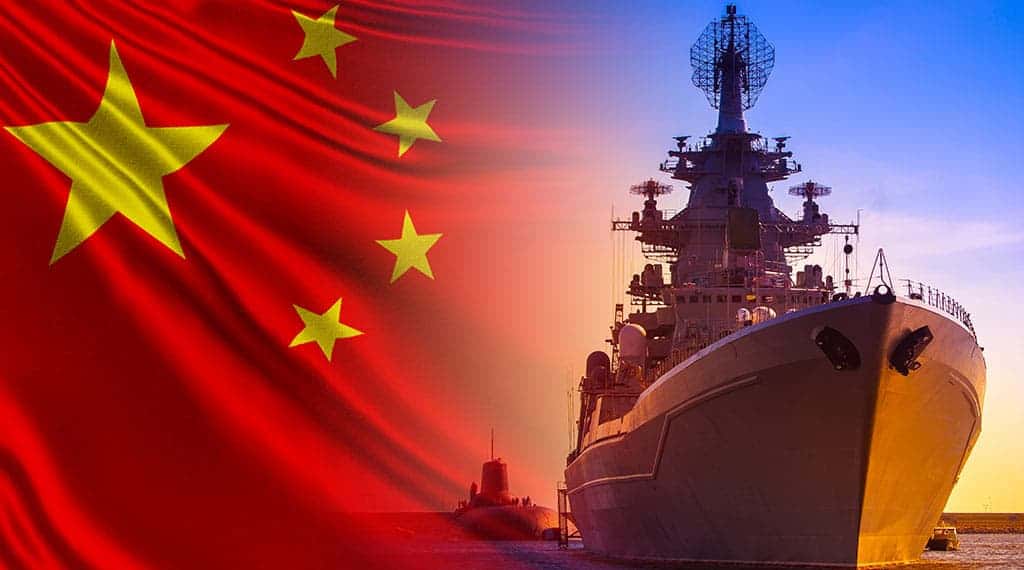
A former U.S. Marine fighter pilot is awaiting extradition from Australia to the United States. He’s charged with helping the Chinese military learn naval flight operations from 2009–2012. It’s against the law to export such defense know-how without a license.
If the charges are true, he really shouldn’t have done this, for example, helping the People’s Liberation Army (PLA) improve its ability to kill Americans if and when the time comes.
This is bad enough, but one might ask: just him?
Yes, teaching Chinese pilots to master the difficult art of flying on and off an aircraft carrier is, at best, stupid and, at worst, traitorous.
But how about providing the funding, technology, and overall support for China’s economic build-up that allowed Beijing to build the PLA into a force that is now the “pacing” threat? In other words, a match for U.S. forces and, in some respects, more than a match.
That’s what Wall Street, Silicon Valley, and too many CEOs have been doing for the last 30 years or more. One forgets how many people were hoping their ship would come in (to use the 19th-century term) in the form of a chunk of Chinese communist cash.
Those who sounded the alarm were “loons” or “cold warriors” and certainly knew nothing about the new globalized economy and “shareholder value.”
The White House and Congress got in on it, too—letting China into the World Trade Organization in 2001 on the promise that it would one day meet the rules for joining the WTO. It still hasn’t.
This bolstered China’s economy and hurt our own. And Beijing did not have to choose between guns and butter.
U.S. financial regulators started listing Chinese firms on American stock exchanges in 2013. That’s important for getting the capital and foreign exchange to buy things like iron ore to make steel for PLA Navy ships and buy foreign technology (with military uses), among other things.
The Chinese companies had a waiver on disclosure requirements since Beijing declared “the books” state secrets. How many U.S. or other nation’s companies got special treatment? None.
And Washington lobbyists played their role—lining up for lucrative gigs representing Beijing’s interests. And there’s never been a shortage of ex-Republican and Democrat politicians willing to help out for a price.
How many former government officials were and are part of the revolving door between government sinecures, think tanks, and consulting firms where they handle Chinese clients and help them navigate rules and regulations that might hamper their business? The rough figure: a lot of them.
And remember our China Hands within the U.S. government and our academic community? There was only one authorized view of China: a non-threatening nation just trying to find its place in the world. And to help things along, all engagement with China was good engagement.
One Ivy League academic who served as a government official during the Clinton administration explained things succinctly in an article published by Project Syndicate:
“When I was supervising the Pentagon’s East Asia Strategy Review in 1994, we rejected the idea of containment of China for two reasons. If we treated China as an enemy, we were guaranteeing an enemy in the future. If we treated China as a friend, we could not guarantee friendship, but we could at least keep open the possibility of more benign outcomes.”
The US Military Holding the Fort?
But certainly, America’s military leaders had China and the PLA sized up and were taking necessary precautions—if only.
In the 1990s, a respected, if not revered, retired Marine general was working with an American company seeking to sell China rocket technology. He was successful.
One reasonably asks if teaching Chinese pilots to land on aircraft carriers is worse than providing China with MIRV (multiple independently targetable reentry vehicle) technologies. Take your pick.
On the U.S. East Coast in 2007, the chief of naval operations, Adm. Mike Mullen, invited the head of the Chinese navy, Vice Adm. Wu Shengli, to tour a U.S. aircraft carrier and a fast attack nuclear submarine.
One former U.S. intelligence officer noted this and other such visits: “The PLAN [People’s Liberation Army Navy] officers would ask 100 questions and get 100 answers from their American counterparts, but whenever an American officer asked a PLAN officer a question … they got no answer.”
In 2008, the then U.S. Marine Corps commandant visited the PLA Navy Marine Corps on a “getting to know you” visit and gave the Chinese marines a pep talk.
A year later, at a press conference while on a visit to Beijing, the U.S.-Indo Pacific Command (USINDOPACOM) commander, Adm. Thomas Keating, didn’t seem too worried about the PLA having aircraft carriers and even offered to help.
“It is not an area where we would want any tension to arise unnecessarily. … And we would, if they choose to develop [an aircraft carrier program], help them to the degree that they seek and the degree that we’re capable, in developing their programs.”
Even by the standards of what was going on in 2009, this was jaw-dropping.
In 2013, the chief of naval operations, Adm. Johnathan Greenert, hosted Vice Adm. Wu in San Diego for another visit aboard a U.S. aircraft carrier and a Los Angeles-class attack submarine. Greenert noted that a better relationship with China would prevent future miscalculations.
The PLA was invited to the U.S. Navy’s premier RIMPAC exercise in 2014 and 2016 despite its aggressive behavior in the South China Sea—and targeting U.S. Navy ships. The Americans thought the engagement would transform Chinese behavior and help avoid miscalculations.
- Communist China Telegraphs Its Punches - December 30, 2025
- Sometimes One’s Image of a Country gets ‘fixed in time’ and left behind by reality - December 22, 2025
- Taiwan confirms $11 billion U.S. weapons sale; China condemns arms deal as ‘dangerous’ - December 18, 2025
